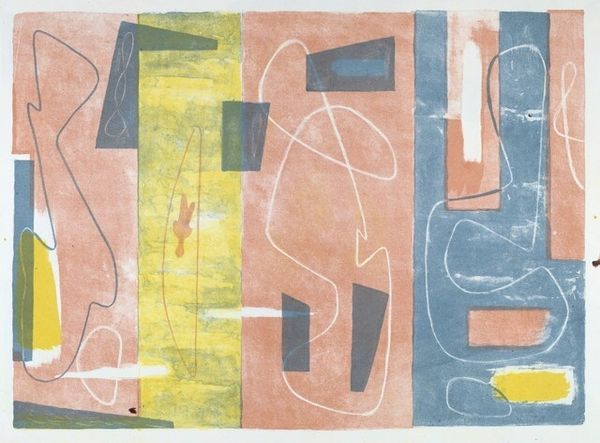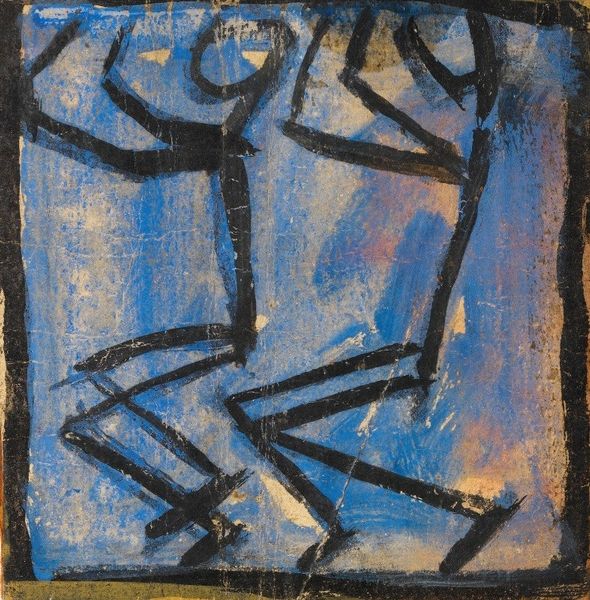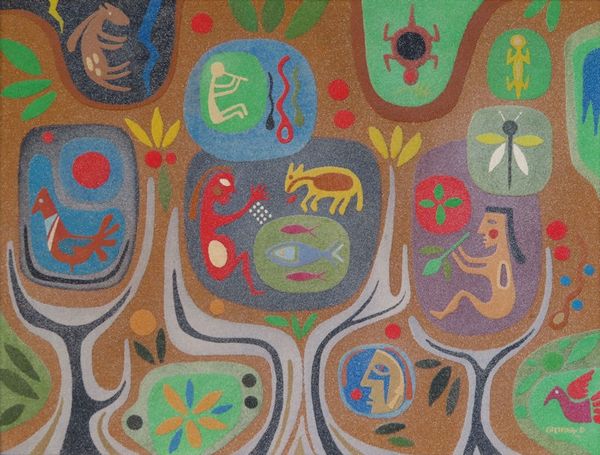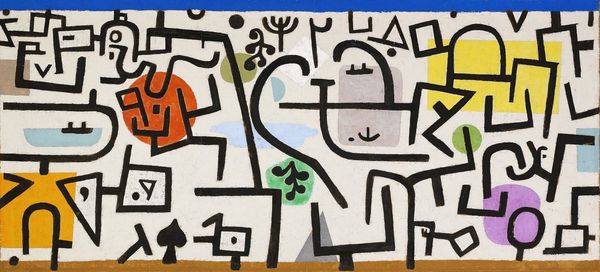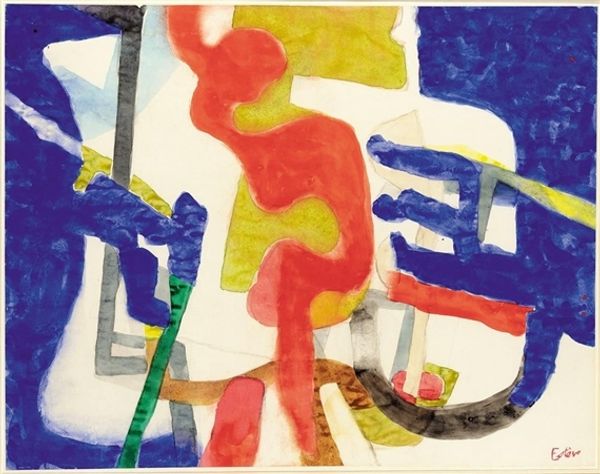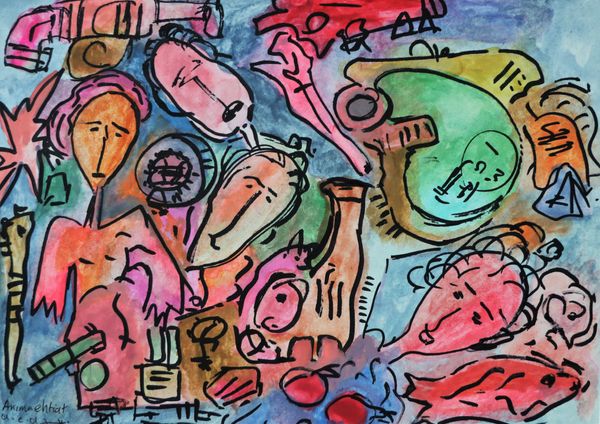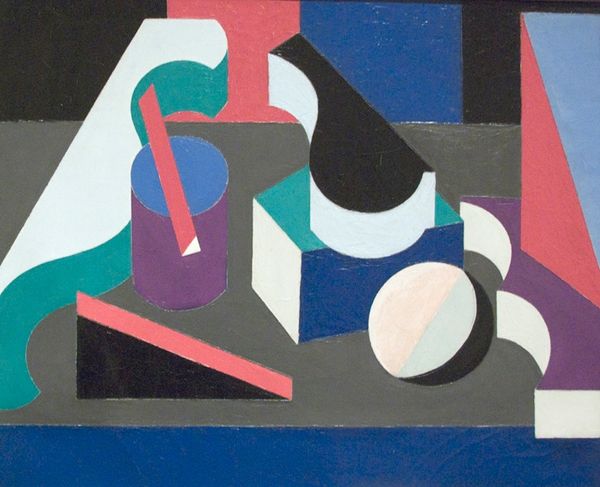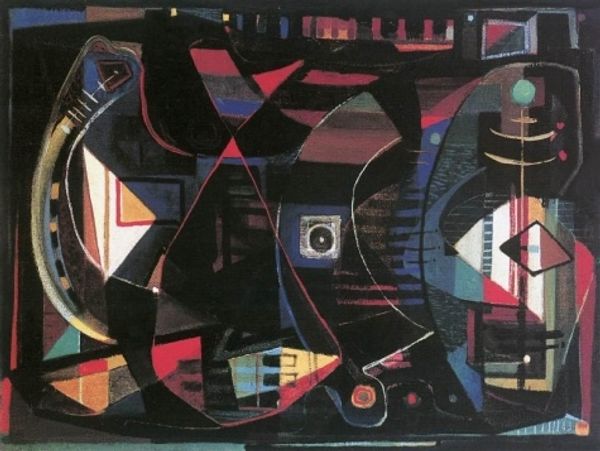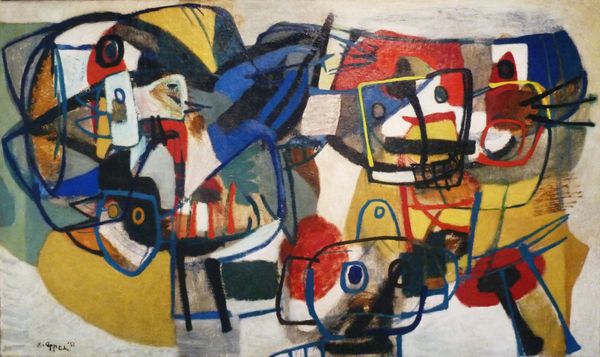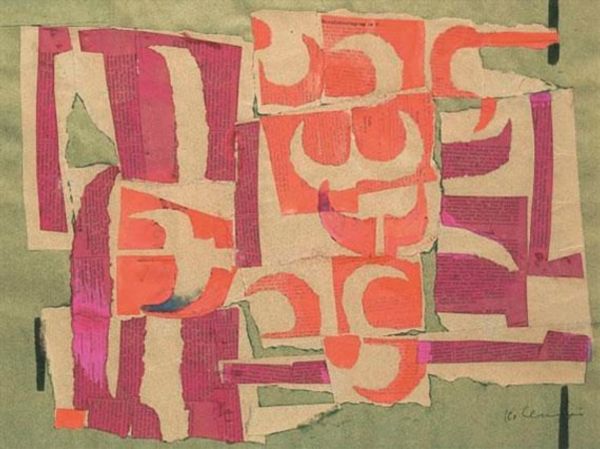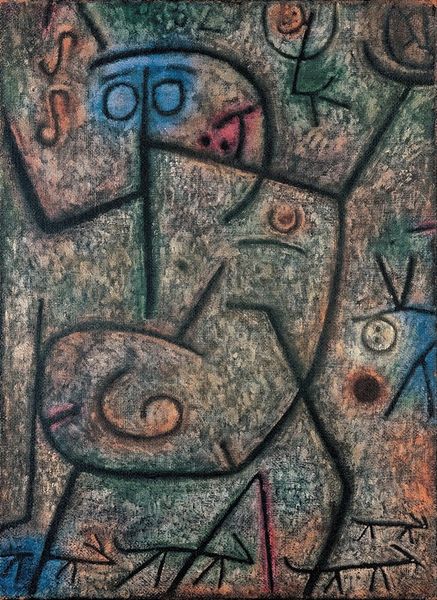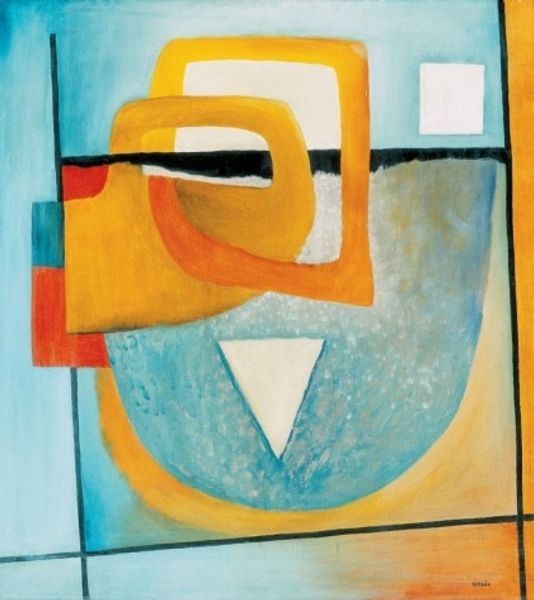
mixed-media, acrylic-paint, watercolor
#
abstract-expressionism
#
mixed-media
#
water colours
#
acrylic-paint
#
watercolor
#
watercolor
Copyright: Adolph Gottlieb,Fair Use
Curator: Right, let's dive in. What strikes you first about Adolph Gottlieb's "Mariner's Incantation" from 1945, crafted with mixed media including watercolor and acrylic? Editor: Immediately, I see a grid, a structured order attempting to contain these very primal, almost totemic images. Does that controlled layout belie the chaos it holds within? It feels simultaneously ancient and strangely modern. Curator: Ah, chaos and order, a classic tension. I think of it more like a collection of memories, maybe half-forgotten dreams. There’s a distinct, dream-like quality evoked by the color choices; a washed-out blue and gentle washes of other soft pigments give it a faded patina that speaks of an unknowable time or history. Each compartment tells its own miniature tale. Editor: The title suggests ritual, doesn't it? "Mariner's Incantation"...an appeal to unseen forces for safe passage or perhaps for return. Thinking about 1945, with the Second World War concluding, these images could be interpreted as pleas for safety, or even lamentations. Curator: Perhaps. Gottlieb, along with other Abstract Expressionists, was deeply interested in myth and the unconscious. There is this reliance on signs, on symbolic figures instead of overt depictions—think about Jungian archetypes surfacing from the depths. Do you think this is applicable here? Editor: Absolutely. We see those faces, simplified and staring—they could be deities or ancestors invoked to offer guidance or protection. It’s fascinating how Gottlieb uses abstraction not to escape meaning but to amplify it. It taps into something deeply human and cross-cultural. Are the faces vulnerable to the sailor or representative of his strengths and protection? Curator: You’ve nudged my understanding a bit further...I get so caught up in how the paintings speak to ME that, quite honestly, it is important to note, not ALL art does that—thankfully. What's important is being able to allow all of those images, symbols, or narratives to present themselves! Editor: It really becomes a conversation, then—with the artist, the historical context, and ultimately with ourselves. Each viewing perhaps offering new interpretations of this beautiful, complex "Incantation." It really exemplifies the idea that great art not only mirrors our world but refracts it in countless ways.
Comments
No comments
Be the first to comment and join the conversation on the ultimate creative platform.
